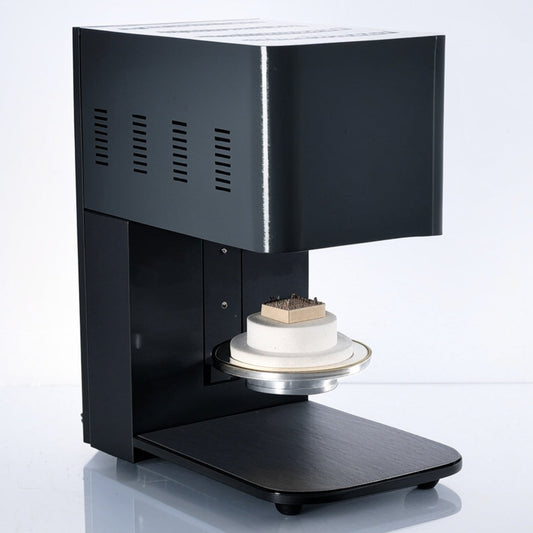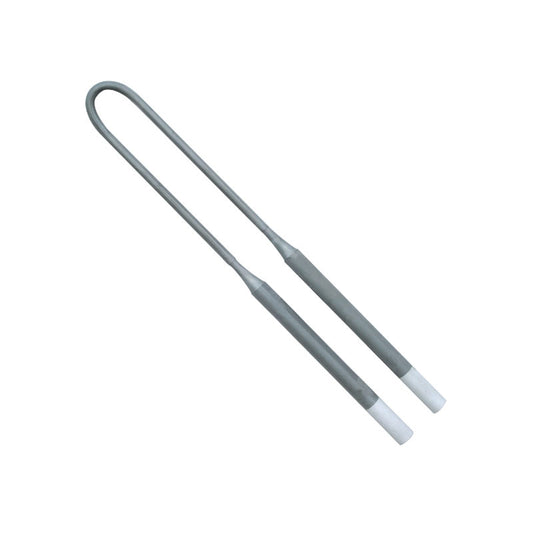Introduction
Dental zirconia is often referred to by a single name, but it is not made of just one material. It is a ceramic that contains several important components. The main one is zirconium, which is combined with oxygen to form zirconium dioxide (ZrO₂), also called zirconia. However, other materials are also added to change how zirconia behaves. These added materials include yttria, hafnia, and alumina. Each of these has a specific purpose in the final product.
1. Yttria (Y₂O₃) – The Main Stabilizer
Function:
Yttria is added to help zirconia keep a stable crystal structure at room temperature. Without yttria, zirconia would change to a weaker form after the high-temperature sintering process. This change would cause the material to expand and crack.
Effects of yttria content:
- Translucency (how much light passes through): Adding more yttria increases translucency.
- Strength: Adding more yttria usually reduces strength. This is why zirconia with high translucency (used in front teeth) is often weaker than less translucent zirconia.
- How yttria content is measured:Weight percent (wt%): Common on safety documents or product labels.
- Mole percent (mol%): Common in scientific papers and now also on many product labels.
Example conversions (approximate):
- 5.5 wt% yttria ≈ 3 mol% (used in traditional high-translucency zirconia)
- 9.3 wt% yttria ≈ 5 mol% (used in highly translucent zirconia for front teeth)
2. Hafnia (HfO₂) – A Natural Companion
Function:
Hafnia is a material that is naturally found with zirconia in the earth. It is difficult to remove completely during purification. Usually, a small amount of hafnia (around 1%) stays in the material.
Effect on the final product:
Hafnia has no negative effect. It does not change the strength, translucency, or biocompatibility of zirconia. It has a crystal structure similar to zirconia and fits into the zirconia structure without problems. It is considered a neutral or harmless component.
3. Alumina (Al₂O₃) – Protection Against Aging
The problem – Aging (Low-Temperature Degradation):
Over time, zirconia can absorb water from its environment, especially at body temperature. If this happens, the water enters the areas between the zirconia crystals (called grain boundaries).
The result:
The water causes the structure to break down. The strong ceramic turns into a weak powder. This process is known as low-temperature degradation or aging.
The solution – Alumina addition:
Adding a small amount of alumina prevents water from entering the grain boundaries. This keeps the zirconia stable over time.
Historical use:
Older zirconia materials had about 0.25% alumina. This effectively stopped aging, but made the material look very white and blocked light (less translucent).
Modern use:
To make zirconia more translucent for full-contour crowns, manufacturers now use much less alumina. Today’s materials usually contain around 0.05% alumina. This small amount is still enough to stop aging without significantly reducing translucency.
Warning:
Some companies have removed alumina completely. This increases the risk of aging. Experts recommend against using zirconia with no alumina.
4. Summary of Ingredients and Their Purposes
Dental zirconia is made from four main ingredients:
- Zirconia (ZrO₂): The main ceramic material.
- Yttria (Y₂O₃): Stabilizes the crystal structure and adjusts translucency and strength.
- Hafnia (HfO₂): A neutral component that is naturally present.
- Alumina (Al₂O₃): Protects the material from aging over time.
The exact percentages of yttria and alumina, and how they are added, have a strong impact on the final product’s strength, translucency, and long-term stability.
Conclusion
Dental zirconia is not just zirconium dioxide. It is a carefully designed combination of materials.
- Yttria controls the balance between strength and translucency.
- Hafnia is naturally present and does not cause problems.
- Alumina is essential for preventing the breakdown of zirconia over time.
Knowing what is inside your zirconia helps you understand why different types perform differently and why quality depends on more than just the base material.








